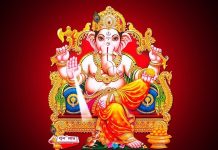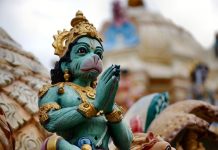Ganesh Chaturthi, also known as Vinayaka Chaturthi, is one of the most revered and widely celebrated Hindu festivals. This vibrant and joyous occasion marks the birth of Lord Ganesha, the elephant-headed deity believed to be the remover of obstacles and the god of wisdom, intellect, and new beginnings. Ganesh Chaturthi, observed with great enthusiasm across India and among Hindu communities worldwide, is a time for religious devotion, cultural celebrations, and social harmony. In this article, we will delve into the history, traditions, and significance of Ganesh Chaturthi.
Historical and Mythological Origins
The origins of Ganesh Chaturthi can be traced back to ancient Indian mythology. Lord Ganesha is said to be the son of Lord Shiva and Goddess Parvati. The story goes that Ganesha was created by Parvati from the dirt of her body while she was bathing. She breathed life into the clay figure and instructed him to guard her privacy while she bathed. When Lord Shiva returned and attempted to enter the chamber, Ganesha, following his mother’s orders, prevented him from entering. Enraged by the young boy’s defiance, Shiva beheaded him in a fit of anger.
Upon realizing the grave mistake, Lord Shiva and Goddess Parvati were grief-stricken. To make amends, Shiva replaced Ganesha’s head with that of an elephant and granted him a boon, declaring that he would be worshipped before all other gods and that his blessings would be sought at the beginning of every undertaking. This legend gave birth to the tradition of worshipping Lord Ganesha as the harbinger of good fortune and the remover of obstacles.
Traditions and Rituals
The heart of Ganesh Chaturthi lies in the installation of Ganesha idols in homes and public places. Months of preparation go into crafting these idols, often made from clay, and they come in various sizes and artistic designs. The idols are placed on elaborately decorated altars and worshipped with devotion and fervor.
The festival typically lasts for ten days, with each day marked by a series of rituals, prayers, and cultural performances. Devotees offer flowers, fruits, sweets, and other delicacies to Lord Ganesha. Bhajans (devotional songs) and aartis (ritual songs) are sung in praise of the deity. Processions featuring idols of Ganesha are a common sight, with devotees dancing and singing in celebration.
Significance of Lord Ganesha
Lord Ganesha holds a special place in Hinduism and is regarded as the deity of wisdom, intellect, and learning. He is often invoked at the beginning of new endeavors, whether they are academic, professional, or personal, to seek his blessings and to remove any obstacles that may hinder success. Ganesha’s elephant head symbolizes knowledge and the ability to think and analyze clearly, while his large ears represent the importance of listening.
The festival of Ganesh Chaturthi, therefore, embodies the idea of new beginnings and the pursuit of knowledge. It encourages people to embark on new journeys with the belief that Ganesha’s blessings will pave the way for success and prosperity.
In conclusion, Ganesh Chaturthi is not just a religious festival; it is a celebration of culture, art, and community. It brings people of diverse backgrounds together in a spirit of joy and unity. In recent years, there has been a growing emphasis on eco-friendly celebrations, with the use of clay idols and sustainable practices to minimize environmental impact.
As one of the most beloved and widely celebrated festivals in India, Ganesh Chaturthi continues to evolve, embracing modernity while preserving its rich traditions. It serves as a reminder of the importance of seeking wisdom, overcoming obstacles, and embarking on new journeys with hope and devotion. Ganesh Chaturthi truly embodies the spirit of Lord Ganesha, the benevolent deity who blesses all with prosperity and success.


























































